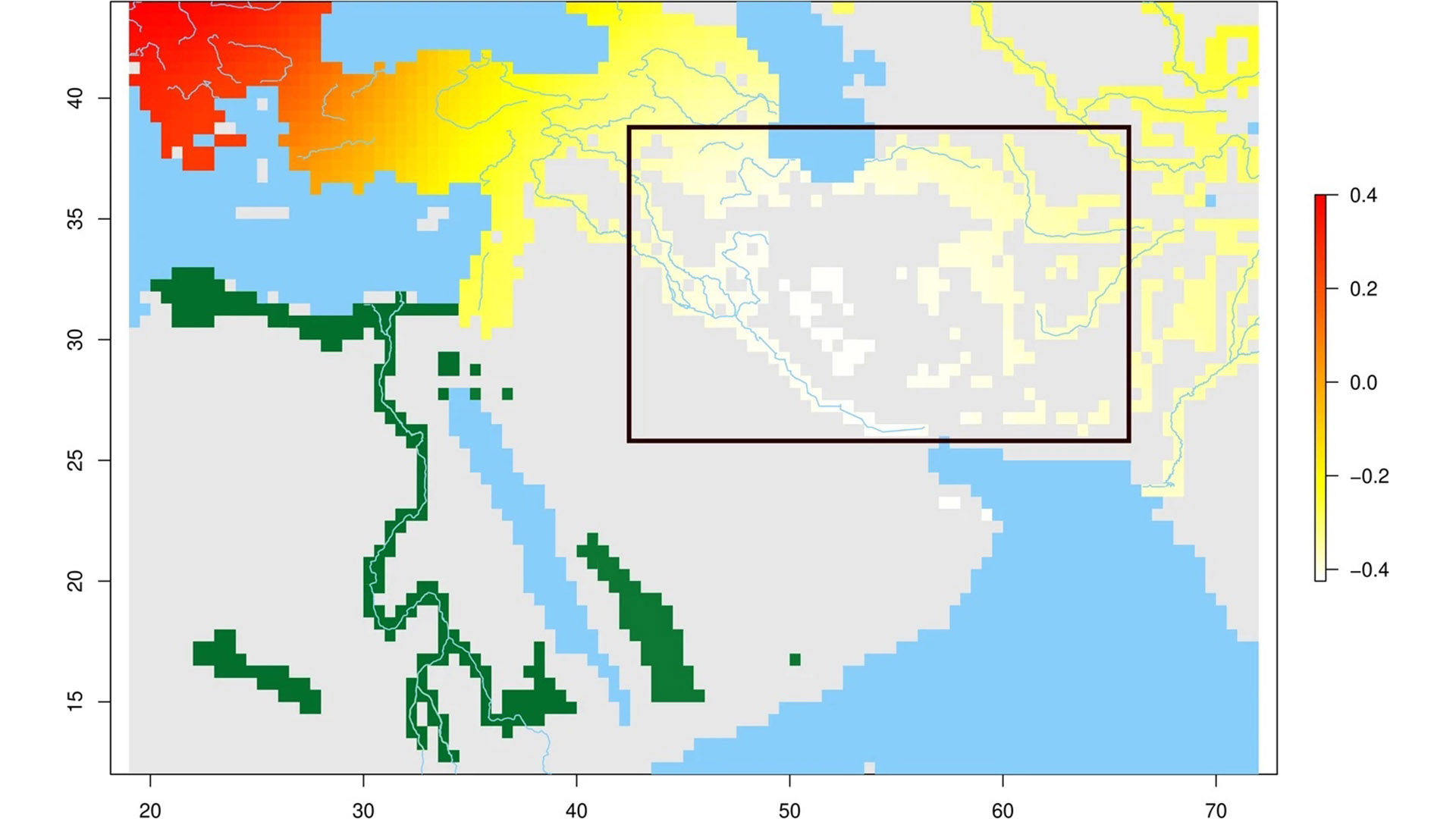Early humans lived on 'Persian plateau' for 20,000 years after leaving Africa, study suggests
After early humans traveled out of Africa 70,000 years ago, they had a "hub" on the so-called Persian plateau, a new study suggests.

After waves of Homo sapiens left Africa, they left few traces of their whereabouts until they reappeared in Eurasia 20,000 years later. So where did they go in the intervening time? A study proposes that Homo sapiens outside of Africa made their home on the Persian plateau during that mysterious period.
Fossil evidence of early Homo sapiens migrations shows that members of our species moved out of Africa at least as far back as 210,000 years ago, while genetic evidence shows that a large wave of migration around 70,000 years ago was the most successful, contributing genes to all modern-day non-African people. But there is a widespread lack of Homo sapiens fossils across Eurasia between 60,000 and 45,000 years ago, prompting the researchers of the new study to investigate where modern humans went during this time.
Using climate models and genetic data, the team found that the Persian plateau was the most suitable location for human occupation during this time, according to the study, published on March 25 in the journal Nature Communications.
However, not everyone agrees with their findings, saying that more evidence is needed.
The Persian plateau, which the researchers defined as a population hub in a previous study, includes most of modern-day Iran as well as the Persian Gulf and Mesopotamia. The team suggests the ancestors of all present-day non-Africans lived there between 70,000 and 45,000 years ago.
The researchers previously looked at information from paleolithic Eurasian genomes and correlated these data with archaeological evidence for changes in stone tool technology. From this, they found that modern humans likely congregated in a population hub that served as the base for multiple migrations throughout Eurasia. But inferring the homeland of the population hub required the addition of a paleoclimate model, which is included in the new study.
Related: Are Neanderthals and Homo sapiens the same species?
Get the world’s most fascinating discoveries delivered straight to your inbox.
By modeling the distribution of a hunter-gatherer Homo sapiens population and reconstructing areas that had suitable environmental conditions for human occupation between 70,000 and 45,000 years ago, the researchers figured out that the Persian plateau was the geographical location most likely able to support a population hub.
The Persian plateau also hosts known Neanderthal fossil sites whose dates overlap with the presence of Homo sapiens. "Admixture [coupling] with Neanderthals occurred during this timeframe, so it is possible that it took place inside the Hub," Leonardo Vallini, a molecular anthropologist at the University of Padua and lead author of the study, told Live Science in an email. "It is also possible, however, that the two groups were avoiding each other and the interactions were much more sporadic."
During this key period of human evolution and expansion, Homo sapiens were hunter-gatherers, Vallini explained. But within this area, people likely traded key information. The hub "might have served as an incubator for the development of cultural innovations" such as rock art and projectile weapons, the researchers wrote in the study.
However, other experts believe more evidence is needed to locate a possible population hub. Sang-Hee Lee, a biological anthropologist at the University of California Riverside who was not involved in the study, told Live Science in an email that the new study brings up images of a dynamic center of ancestral human occupation. However, Lee wonders if the palaeoecology model is a suitable one for ancestral humans.
"Paleoecology data from the 'Hub' rely on a single data point in Iran," Lee said, referring to the lone data point the study authors present to verify their hypothesis that the hub was a hospitable place. "Of course, an absence of evidence does not mean an evidence of absence," Lee noted.
The study authors acknowledge that more hominin fossils and climate data are necessary to validate their hypothesis.
But if the Persian plateau was indeed a population hub for tens of thousands of years, this key region is ideal for searching for both fossil evidence and paleoecology data that could fill in the gaps in ancestral humans' migrations throughout Eurasia, the authors said in their study.

Kristina Killgrove is a staff writer at Live Science with a focus on archaeology and paleoanthropology news. Her articles have also appeared in venues such as Forbes, Smithsonian, and Mental Floss. Kristina holds a Ph.D. in biological anthropology and an M.A. in classical archaeology from the University of North Carolina, as well as a B.A. in Latin from the University of Virginia, and she was formerly a university professor and researcher. She has received awards from the Society for American Archaeology and the American Anthropological Association for her science writing.



